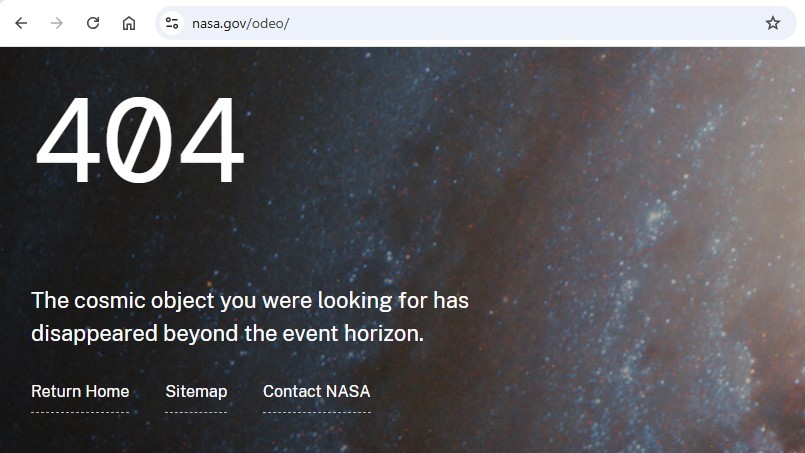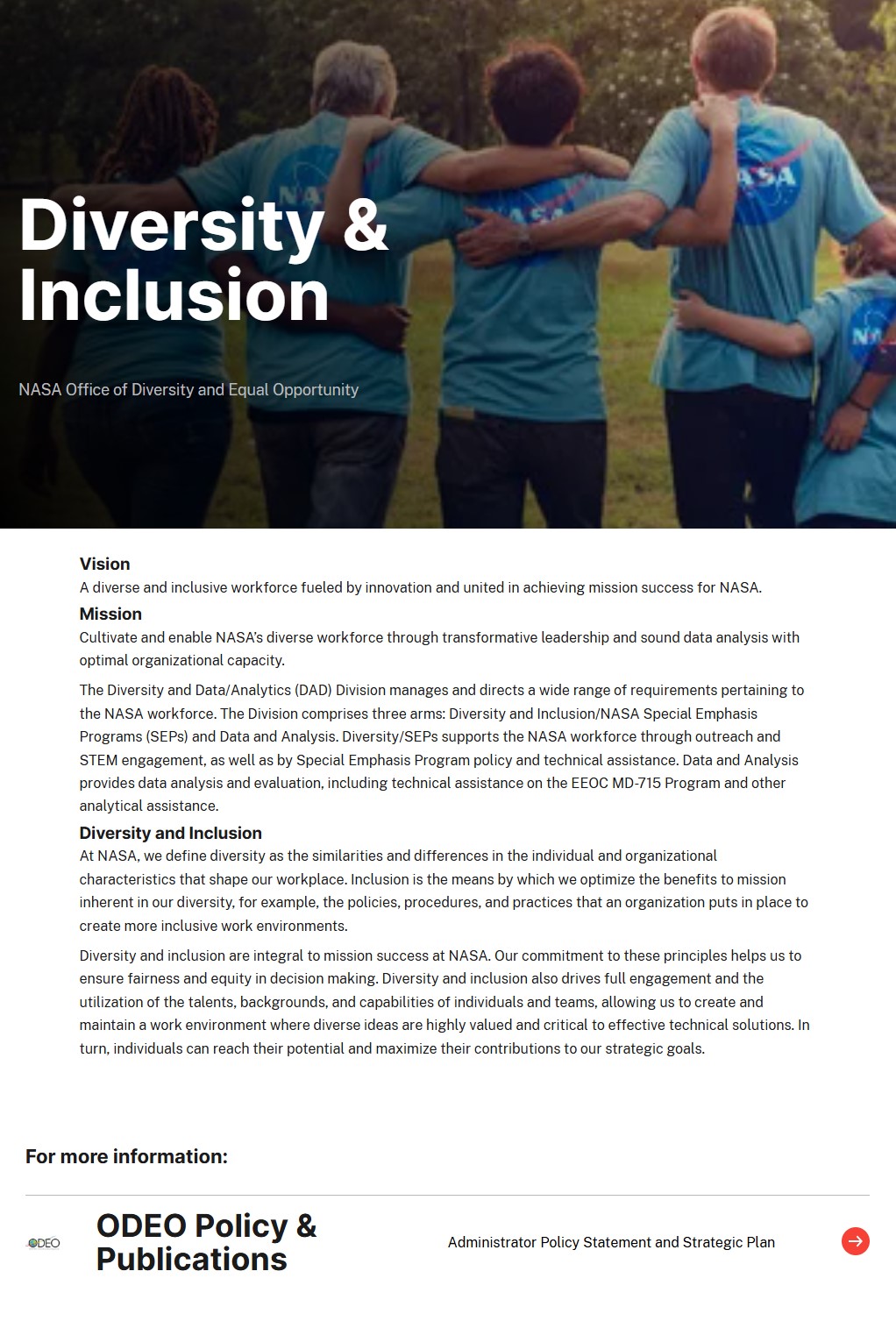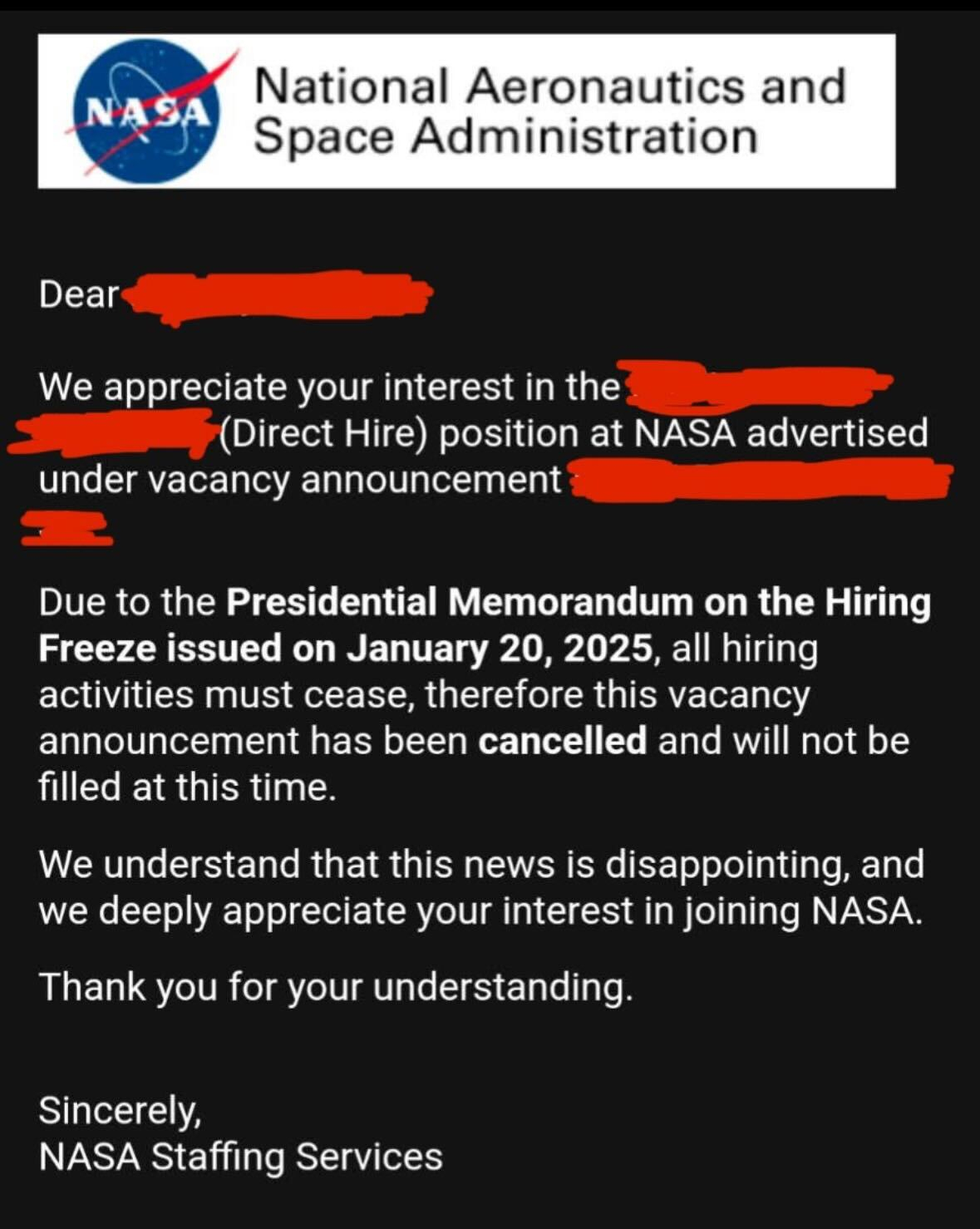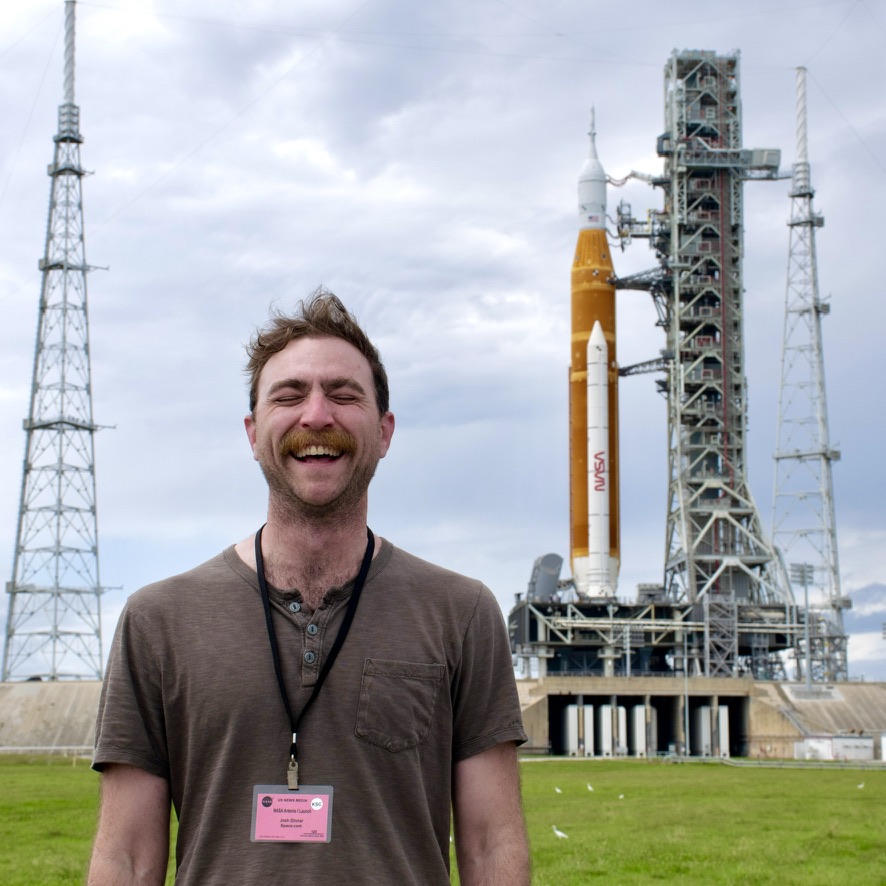Trump orders interim NASA chief to end DEI initiatives
"Failure to report this information within 10 days may result in adverse consequences."

NASA is not immune to the sweeping hand of the incoming administration.
Following suit alongside other United States federal agencies, NASA has been instructed to close offices associated with diversity, equity, inclusion and accessibility (DEIA) initiatives, and end any related programs. Employees of the space agency received a memo from acting NASA administrator Janet Petro on Wednesday (Jan. 22), issuing the directive in compliance with a pair of executive orders signed by President Trump during his first days in office.
The orders in question, Ending Radical and Wasteful Government DEI Programs and Preferencing, as well as one titled Initial Rescissions of Harmful Executive Orders and Actions, are aimed at eliminating "immense public waste and shameful discrimination," according to the White House.
There will be no adverse consequences for timely reporting this information. However, failure to report this information within 10 days may result in adverse consequences.
Janet Petro, acting NASA administrator
"These programs divided Americans by race, wasted taxpayer dollars, and resulted in shameful discrimination," NASA's agency-wide memo reads. The email goes on to acknowledge possible subversive efforts to circumvent relevant programs from inclusion, and offers a ten-day amnesty period for anyone willing to report these occurrences. Failure to come forward with such information within that grace period, the memo says, "may result in adverse consequences."

Petro signed her name to the email that went out to NASA employees, but its contents were not directly penned by the acting administrator. In a memo to every head or acting head of every government department and agency, Acting Director of the U.S. Office of Personnel Management (OPM) Charles Ezell mandated agency-wide notices be sent to employees to inform them of the closures, and to remove DEIA-related language from all communications and public-facing content by 5:00 p.m. ET (2200 GMT) on Jan. 22.
The OPM memo also requires agencies to submit written plans by Jan. 31 for reducing their DEIA workforce and to provide lists of any contracts or position descriptions that were altered after Nov. 5, 2024, "to obscure their connection to DEIA programs." Attached to that memo as Appendix 1 was the exact language sent to NASA employees.
If (when?) the time comes that NASA has been instructed to cease tweeting/sharing info about science and climate change, we will inform you.January 26, 2017
"It's terrifying," one NASA employee told Space.com. "I thought NASA would be fighting this."
Breaking space news, the latest updates on rocket launches, skywatching events and more!
In fact, in 2017, when President Trump's administration directed agencies to eradicate or limit communication materials mentioning climate change, several "rogue" social media accounts popped up in defiance. Within a week of Trump's first inauguration, one of those accounts, @RogueNASA, on X, posted, "if (when?) the time comes that NASA has been instructed to cease tweeting/sharing info about science and climate change, we will inform you."
Now, it seems the agency's transition into a second Trump presidency is going smoother than the first. The website for NASA's Office of Diversity and Equal Opportunity (ODEO), and its associated pages have already been taken down; returning "404" error codes for all but the office's mission page, which was still active at the time of this writing. Update: As of 5:50 p.m. ET Jan. 23 (0350 GMT, Jan. 24), NASA's ODEO mission page was also removed.

Though it faces the chopping block, ODEO's mission was to, "cultivate and enable NASA’s diverse workforce through transformative leadership and sound data analysis with optimal organizational capacity."

Petro echoed ODEO's vision when speaking about diversity in a 2021 interview with Engineering News-Record, when she served as director for the Kennedy Space Center (KSC).
"A big part of this is ensuring an environment where everyone feels included, has a voice and feels safe to express their opinions," Petro said. "I have mentored numerous minorities along their professional journeys, and as director, I am committed to leading Kennedy Space Center to have a diverse and inclusive environment where everyone can thrive."
"The entire NASA leadership team stands behind this commitment," Petro said at the time. Now, as the agency's acting administrator, it seems those commitments have changed.
The closure of NASA's DEIA offices aren't the only ripples of the incoming administration reverberating through the space agency. A federal hiring freeze, signed into executive action the same day as DEIA program elimination order, brought a halt to the interview process for anyone hoping for employment at the agency voted Best Place to Work in the Federal Government, 12 years in a row.
One of those hopefuls received an email Wednesday informing them that the position they applied for would no longer be filled. Their application was submitted last year, and they waited months for an update, the applicant told Space.com.

"I’ve wanted to work for NASA ever since I was a kid, and for my first real chance at it to be thrown away like this is utterly disappointing," the applicant said. "When the email first came in, I thought it may have been an update concerning an interview. Instead, it was an email saying the process had been canceled. Myself and over 1,400 other applicants were stolen the chance at an amazing career."
While DEIA initiatives at NASA and other agencies are being specifically targeted by the Trump administration, the incoming president did give a nod to American space endeavors during his inaugural address, saying the country "will pursue our manifest destiny into the stars, launching American astronauts to plant the stars and stripes on the planet Mars."
Indeed, NASA faces a paradigm shift. Last week, ahead of the incoming administration, the agency's previous administrator, former astronaut and Senator Bill Nelson, announced his retirement (Jan. 17).
During his tenure, Nelson continued to herald NASA's commitment through its Artemis Program, "to land the first woman and first person of color on the moon." Now, more than just the program's motto faces possible revisions.
As it stands, the architecture for NASA's next crewed missions to the moon relies on the Space Launch System (SLS) — a non-reusable, multi-billion dollar rocket capable of lifting the Orion spacecraft into a translunar injection orbit. Throughout its development, and since its first launch in 2022, the vehicle has been widely criticized for being too costly, behind schedule and a waste of government resources. Some critics question whether SLS should fly again, when, theoretically, SpaceX's reusable Super Heavy booster and Starship could launch the same missions for a fraction of the cost.
That neither Super Heavy nor Starship were anywhere close to operational status during the launch of Artemis 1, and that both are still currently under development not withstanding, NASA has contracted Starship to land its astronauts on the moon as a part of Artemis 3, in conjunction with its Orion capsule. Now, as Starship development has continued to progress alongside repeated delay announcements for Artemis missions 2 and 3, speculation is circulating that SLS and the Artemis Program as we know it could undergo some drastic changes.
Jared Isaacman, the billionaire philanthropist who's funded and flown on two private astronaut missions with SpaceX including the historic Polaris Dawn mission, has been nominated as the next NASA administrator. Through his spaceflight career, Isaacman has built a relationship with SpaceX CEO and fellow billionaire Elon Musk, who is subsequently playing a perceptually heavy hand in some of the Trump administration's policies.
In addition to his role at SpaceX, Musk has been appointed to head a new agency in charge of "government efficiency" in an effort to cut spending, and Isaacman's nomination has raised a questions of Musk's possible influence behind the scenes, and a possible shift from SLS to Starship as a path forward for NASA and the Artemis Program.
Join our Space Forums to keep talking space on the latest missions, night sky and more! And if you have a news tip, correction or comment, let us know at: community@space.com.

Josh Dinner is the Staff Writer for Spaceflight at Space.com. He is a writer and photographer with a passion for science and space exploration, and has been working the space beat since 2016. Josh has covered the evolution of NASA's commercial spaceflight partnerships and crewed missions from the Space Coast, as well as NASA science missions and more. He also enjoys building 1:144-scale model rockets and human-flown spacecraft. Find some of Josh's launch photography on Instagram and his website, and follow him on X, where he mostly posts in haiku.
